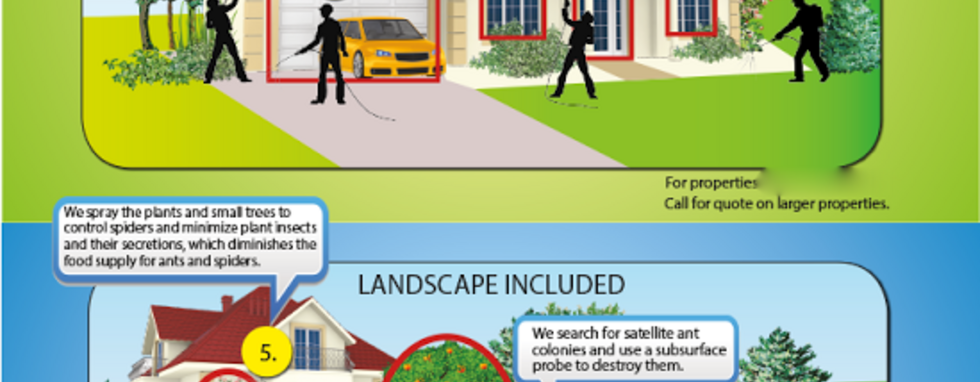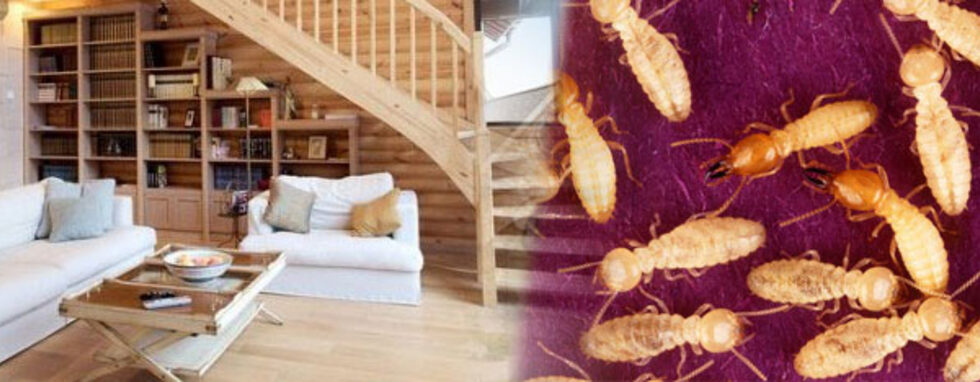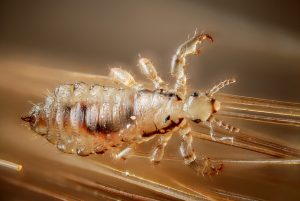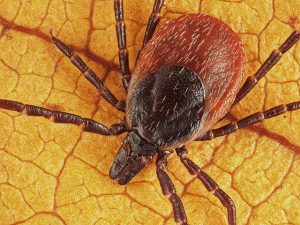What conditions attract mosquitoes?
Tall grass and bushes along with standing water attracts mosquitoes to your yard. Mosquitoes must breed in water so any standing water around your home will attract them to your home. Also, adult mosquitoes live within the cover of vegetation so any overgrown grass or shrubs can attract them.
What attracts mosquitoes to an individual person?
Recent research from the University of California, has shown that how much carbon dioxide a person releases can be linked to how mosquitoes are attracted to them. Mosquitoes have carbon dioxide sensors that allow them to track and find a host up to 50 meters away. Additionally certain skin odors cause mosquitoes to be attracted more to certain individuals along with the amount of certain acids and build up on your skin. .
How can I prevent mosquitoes?
Around Your Home:
Making your home and yard inhabitable for mosquitoes helps to keep them from becoming a problem. First remove all standing water and objects that can collect standing water from your home, including buckets, tires, cans, drums. If these objects must stay in place empty them of water at least once a week. Change the water in bird baths and dog bowls every 3-4 days. It only takes a little water for mosquitoes to breed so constantly keep an eye out for them. Also, check to make sure gutters are clear of debris that could cause blockages and water build-up. Repair leaky faucets to prevent a water source from being available for mosquitoes. Keep grass and bushed cut short so adult mosquitoes will not live in the area. Also, check screens on doors and windows for any tears and that they fit properly. If you continue to have problems with mosquitoes consider establishing a mosquito prevention plan with a professional pest management company.
On Your Person:
When outside be sure to wear a repellent that includes DEET. If you prefer natural repellent look for ones that are soybean oil-based. Scientific studies have shown that soybean oil-based repellent works longer than other natural options like lemongrass, citronella, cedar, or peppermint. Try to stay indoors during peak mosquito hours in the evening and if you must go outdoors try to wear long sleeves. Because mosquitoes are attracted to carbon dioxide, try not to do strenuous activities during peak times. The increased breathing (carbon dioxide) will help to attract mosquitoes to your location. Additionally, mosquitoes are attracted to movement so keeping your activity down will help too.
Check out this video for more tips and info to keep your family safe from mosquitoes.
Termites are Swarming!
Swarmer Season is here!
This week the termite swarmers are definitely out in South Nyanza and . Termites are out earlier than usual this year. While termites can be a frightening discovery for a homeowner, with proper knowledge and pest management one can keep termites from destroying their property.What are Termite Swarmers?
Termite swarmers, or flying termites are matured male and female termites that swarm to find a mate and start a new colony. Typically a swarm of flying termites is the first sign of infestation, but sometimes it's just termites that have flown from a neighboring colony. Also, once flying termites mate and start a new colony it will take some time (years) before the new colony can cause substantial damage.
When do Swarmers Arrive?
Typically flying termites swarms appear between early April and October depending on the rainy season that year.
What to do if a Termite Swarm is on your property?
While seeing termite swarms doesn't necessarily mean that you have a termite infestation it is a reminder to have your property inspected by a pest management professional. Flying termites can't travel very far, therefore signifying that there has to be an active colony nearby.
What's the difference between a flying termite and a flying ant?
Many of the calls we have been receiving this week about termite swarmers actually have turned out to be flying ants. To tell the difference inspect the wing length and size, the body shape and the antenna shape of the pest.
Flying Termites vs. Flying Ants
- Termite have longer and equal length wings, while ants are uneven and shorter.
- Termites have a straight abdomen, while the abdomen of an ant is thin.
- Termites have straight antennae, while ants have bent antennae.
How can I protect my property from Termites?
Establishing a termite protection plan with a pest control company can help ensure that your home is protected from this wood-eating pests. Most pest management companies offer termite protection in the form of a baiting system with devices installed in the ground around the structure or yearly barrier and crawl space sprays to target potential problem areas. Also, yearly inspections of you home and crawl space are key to the prevention of termite infestations.
Here are some tips to protect your home from future termite infestation and damage:
- Remove dirt, mulch and debris from around the home, making sure it does not touch the structure.
- Store wood away from the home and off of the ground.
- Insulate the crawl space to prevent high humidity, which attracts termites.
- Fix leaks and pipes to prevent moisture on wood.
Using Predator-Prey Relationship as IPM Strategy
Integrated Pest Management has seen great results in most areas and is still being developed to fight new threats to homes and crops. Some farm industries have seen large reductions in pesticide usage over the years by implementing IPM strategies. Recently farmers have been using natural predator-prey relationships as a form of pest control without having to use traditional pesticides.
In other cases natural predators have been used as a form of IPM, instead of traditional pesticides to fight pest populations in crops. The news just reported the use of a parasitic wasp to fight the Asian citrus psyllid, an aphid-sized pest that has been destructing citrus crops. Scientist have been releasing the wasps as an alternative to traditional pesticides. The wasps are already in use in USA and other parts of the world.
Another means of IPM via predator introduction is the use of the Western Bluebird in gardens and vineyards in California. reported vineyards and gardeners using the bird that nests in small holes in trees, usually made by woodpeckers, to fight insects. The bird gathers grasshoppers, ants, wasps, caterpillars, beetles, flies, termites and other scale insects during nesting season to feed to their young.
A reported that small scale research has shown promise and plans to do more research in commercial orchards in the future.
The movement of the pest control industry to integrated pest management has helped decrease the use of pesticides, thus helping the environment. IPM will continue to help farmers, and homeowners protect their livelihood while continuing to protect our environment
March Mosquito Madness!
Almost all of Lake basin region is already experiencing these biting pests, making this year one of the earliest sitings of the bug in recent history. Also because we experienced very little hard freezes this winter expect more mosquitoes to be seen throughout the rest of the warm seasons. Cold and freezing temperatures are required to kill off mosquito larvae, keeping populations somewhat low.
With mosquito season already upon us we suggest a few precautions to keep your family and pets safe from these biting pests.
- Dispose of items that can collect water from around your home. Mosquitoes need only a little water to breed, so be sure to check after rain to ensure any water is removed.
- Keep gutters clear of debris and trash.
- Fill in or drain places in your yard that can collect water, i.e. puddles, ruts, etc.
- Keep ditches and drains free of trash so they will drain properly.
- Keep grass and shrubbery well trimmed so adult mosquitoes will not hide in them.
- If you have an ornamental pond, stock it with fish that eat mosquito larvae.
- When outdoors wear an insect repellent that contains DEET, following instructions carefully.
- Inspect windows and screens for cracks to keep mosquitoes out of the home.
Homemade Pest Remedies
In these economic times many people have turned to "Do It Yourself" (DIY) home remedies for different things around the house. This too is true with pest control methods. While nothing can replace professional pest management services, these home remedies may help to make your life easier and wallet fuller when it comes to everyday pests.
You will need:
1 quart jar
1 piece of paper, rolled up into a funnel
tape
apple cider vinegar
small slice of banana
Just fill the quart jar with a half inch of apple cider vinegar and a small piece of banana. Next, roll the paper into a full shape and place it in the jar. Make sure to tape the edges shut so the flies cannot escape. Place the jar where the fruit flies are most prominent and let it go to work! Once you've caught the flies either release them outside or place the jar in the freezer to kill the flies (you can reuse the ingredients).
DIY Fruit Fly Trap
This "Frugal and Natural Pest Control" can save you time and money when it comes to fruit flies within you kitchen. Found on this trap is easy to make and can help save your food from pesky home pests.You will need:
1 quart jar
1 piece of paper, rolled up into a funnel
tape
apple cider vinegar
small slice of banana
Just fill the quart jar with a half inch of apple cider vinegar and a small piece of banana. Next, roll the paper into a full shape and place it in the jar. Make sure to tape the edges shut so the flies cannot escape. Place the jar where the fruit flies are most prominent and let it go to work! Once you've caught the flies either release them outside or place the jar in the freezer to kill the flies (you can reuse the ingredients).
Homemade Natural Insect Repellet
Many people feel uncomfortable with bug repellent brands sold in stores because of their unnatural ingredients and other harmful chemicals they may contain. This homemade insect repellent found on Themarathonmom.com is easy to make and is an all-natural substitute for store-bought repellent.
You will need:
- one lemon, sliced thin
- 1 Tablespoon fresh rosemary, crushed
- 4 cups boiling water
- spray bottle
- funnel
- strainer
- medium bowl
What Does a Warm Winter Mean for Pest Management?
The warm temperatures have flowers blooming early, pollen falling sooner and people already donning shorts, in February. In the pest management world, this means insects that lay dormant over the cold winter hatching earlier and having higher survival rates than in a typical year.
Insects hatching earlier will probably not be the cause of more pests this year. Most insects have a life span of 1 year so while we'll see them earlier this year we'll also see them leave earlier in the fall. However, higher survival rates seen because of warmer temperatures may lead to more insects this year.
Typically winter months cause insects to go underground or seek shelter in warmer places. The warm winter temperatures allow for a higher survival rate for insects and larvae causing much of the population that would have died off in the colder temperatures to survive throughout the winter months into the spring. Most pest management companies suggest renewing a quarterly pest management plan that covers insects and mice for an entire year to prevent infestations later in the year.
Warmer temperatures also mean different behaviors seen in wildlife. With warmer temperatures comes more activity from squirrels, raccoons, snakes and other wildlife. The environment is signaling the beginning of spring, so animals will respond accordingly.
Typically mammals mate in the Spring months, so with a longer "Spring" this year there may be an increased level of rodents and wildlife this year. Be sure to contact a licensed wildlife professional to remove any wildlife problems you may experience this spring.
Bed Bugs Playing Hide-and-Seek in Used Items
There have been multiple news stories in the past couple of years about bed bug infestations everywhere from apartment buildings to libraries, one recently got us thinking about these bug's intense stealth abilities. There have been numerous reports of bed bug infestations caused from used furniture and clothing.
The harmless second hand items that you might pick up from your local vintage store, or buy for a great deal off Craigslist could be a hiding spot for these pesky creepy crawlers. The problem with used items and bed bugs is the bug's ability to conceal itself almost completely from the naked eye. Also, because of their ability to go for weeks even months without feeding allows for the bugs to stay hidden within furniture for long amounts of time.
CNN reported that the average homeowner is easily susceptible to a bed bug infestation through used furniture and clothing. We'd suggest to double check any furniture before bringing it into your home and to place any used clothing in the dryer set on medium to high temperature for 20 minutes to kill bedbugs and their eggs.
Bed bugs don't seem to be a problem that will go away soon, but by being diligent and careful you can lessen your chances of an infestation. If an infestation does occur be sure to contact a licensed professional before attempting any chemical treatments in your home.
Termite Chewing Technology
(courtesy of Dini M. Miller & theVirgina Cooperative Extension)
Termites have long been an adversary in the pest control industry through their ability to ruin homes with costly damages and destruction, but now researchers at Edith Cowan University have created new technology that could help prevent termite destruction by simply listening to them chew.
The new device reported in Science Network last week would plant tiny acoustic listening devices in wood around the home and send signals if and when termites begin to chew on the wood. These signals could be sent via SMS text or even email to pest control companies with a GPS location of the termite activity.
The device is being called a ‘wireless smart probe’ network for acoustic detection or WiSPR for short, can even detect termites in power poles or timber bridges. Once placed in the ground the device can help detect current termite activity or be the first warning if termites do show up.
This technology would be a great break through in termite detection and would help to keep costly damages at minimum for homeowners. Plans to release the device in Australia within the next year are in the works.
To read more on this new device check out the full release from Science Network Western Australia.
Pests Hiding in the Christmas Tree
During the holiday season many families like to opt for the natural look of a traditional Christmas tree in their home. The scent of a conifers tree along with lights and ornaments can provide for a beautiful setting for the holidays.
Many states and local governments are telling tree buyers to be wary when buying and bringing trees into your home due to the possibilities of insects hitching a ride. Pests entering your home via a tree can cause possible harm to your home and can cause harm to the local environment, warned citizens not to buy from tree vendors and from local farms to keep harmful species from being introduced into their homes
The insects such as "gypsy moth, the sirex woodwasp and the pine shoot beetle" can be harmful to the local area. Invasive species brought into new regions by trees have been an issue in the Christmas tree farming business for a long time, especially if the tree farm is in a quarantined zone. Christmas trees must be inspected for insects before being sent to places outside the market. The campaign give a few tips when decorating for the holidays:
- Cut your own tree (usually with a permit) from a forest within 10 to 20 miles of your house;
- Buy your trees and wreaths from an established local business, not from a fly-by-night operator selling on the side of the road; and
- Order online from a recognized vendor–not from an unknown person on sites like Ebay or Craigslist that may not be in compliance with important quarantines or regulations.
































